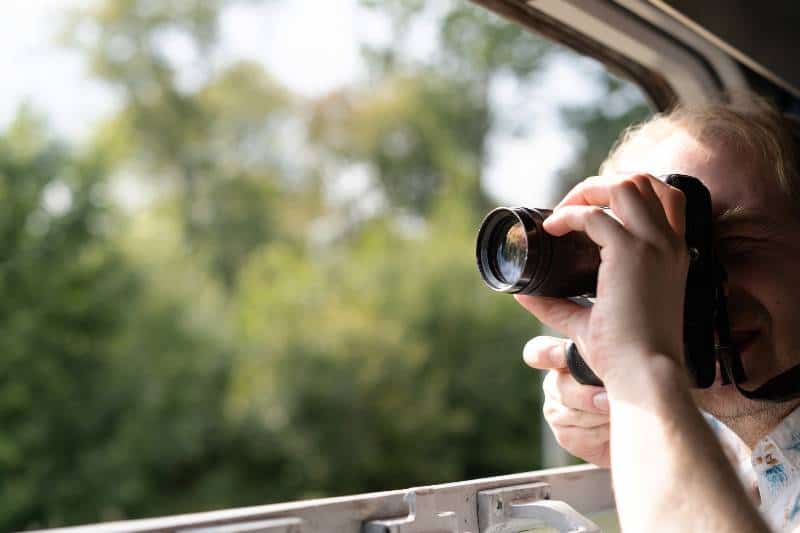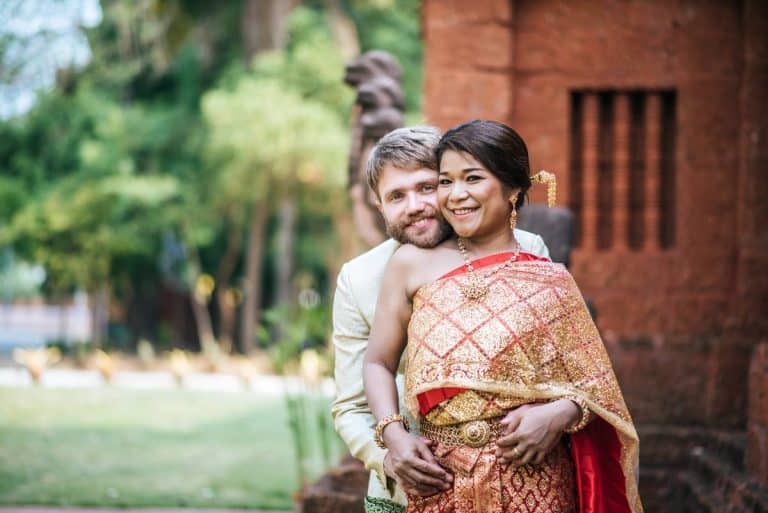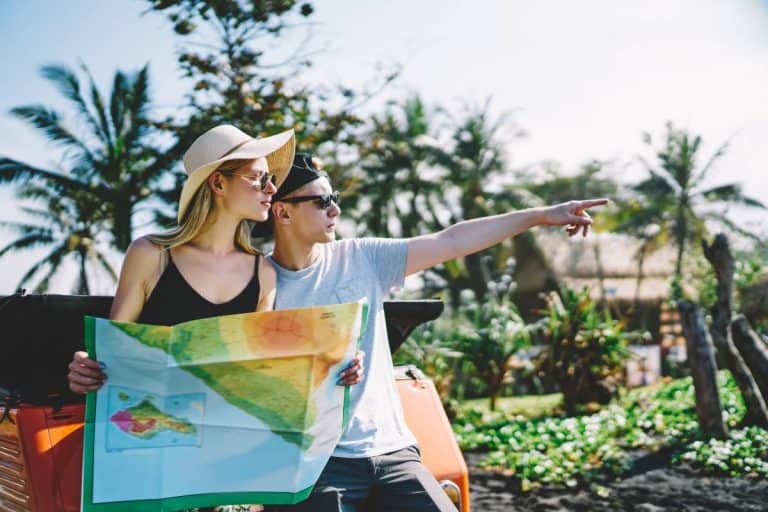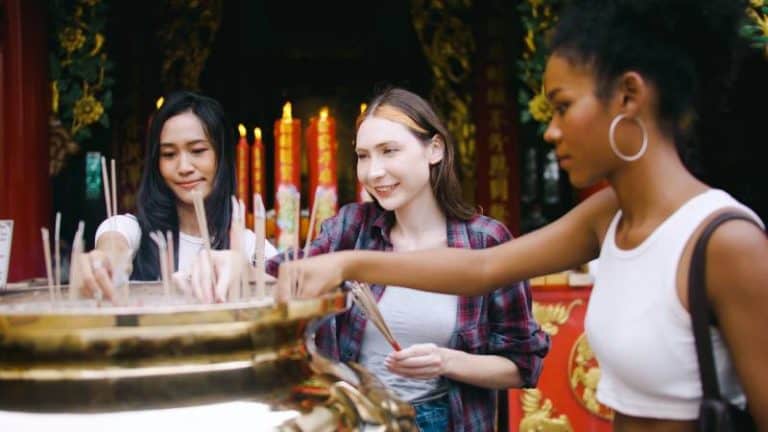Capturing Life: A Guide to Thai Street Photography
One of the best reasons to visit Thailand is its vibrant culture and unique street scenes that capture your attention from all angles. Whether you’re admiring the colorful markets, exotic temples, or bustling city streets, there are stunning visuals on every corner. So why not document some of these inspiring sights with a camera?
Thai street photography offers an opportunity for budding street photographers to travel through historic towns and modern cities alike while exploring new perspectives. Take an adventure across Thailand’s diverse landscape as we take a closer look at what it takes to produce captivating photographs that honor both its aesthetic appeal and cultural identity.
Thai street photography captures the vibrant essence of daily life, juxtaposing ancient traditions with modern hustle. Through the lens, bustling markets, saffron-robed monks, ornate temples, and lively street vendors come alive, revealing Thailand’s soulful heartbeat and the spirited resilience of its people. A visual journey into Thailand’s heart.
Key Takeaways
- Thai street photography is not just about capturing images but understanding and respecting the rich culture and traditions of Thailand.
- While the streets offer countless photo opportunities, mastering the technical aspects of photography ensures that the essence of the moment is captured perfectly.
- Being aware of and respecting the privacy and boundaries of subjects is crucial. It’s essential to approach street photography with sensitivity and empathy.

Historical Context
Street photography as a genre has been around since the invention of portable cameras, but it really began flourishing in the mid-20th century. In Thailand, street photography has grown out of urbanization and the social change surrounding it, making the streets an important stage for capturing life in its myriad forms.
Thailand’s capital, Bangkok, became a dynamic focal point for this emerging photographic style due to its rapid growth and increasing intermingling of traditional and contemporary lifestyles. Internationally, Thai street photography was largely unknown until the advent of social media.
The Evolution of Street Photography in Thailand
Initially, the works of Thai street photographers were primarily monochrome images depicting daily urban life, drawing inspiration from internationally acclaimed street artists of the era.
With the advent of digital photography in the late 1990s and early 2000s, color became a more significant aspect of Thai street photography, adding a new dimension to the field. This period also marked a transition from film to digital—one that emphasized immediacy and the proliferation of images.
The rise of social media platforms in the mid-2000s created an explosion of street photography, making it more accessible to the public. As a result, Thailand’s street photography scene has since been bustling with a new generation of photographers, defining a unique visual style, strongly reflecting Thai culture, urban narratives, and political undercurrents.
Famous Thai Street Photographers and Their Contributions
Chatchai Boonyaprapatsara is one of the most notable Thai street photographers, known for his black-and-white pictures of Bangkok’s street life taken in the 1980s and 1990s. He has a remarkable ability to frame simplistic elements from the streets into powerful, thought-provoking images.
Veerapon Sripun has contributed to defining contemporary Thai street photography. His vivid color images are full of energy and contrast, capturing the essence of modern Bangkok’s vibrant, chaotic streets.
Rammy Narula has gained international acclaim for his project ‘Platform 10,’ depicting isolated people within the bustling backdrop of Bangkok’s central station. Narula’s work is characterized by its compelling emotional depth and atmospherical consistency, achieved through his excellent use of light.
Street photography in Thailand has come a long way from its early days. It has evolved over time from simple black-and-white images of daily life to a vibrant, diverse, and politically informed art form. It is clear that Thailand’s street photographers will continue to innovate and push the genre’s boundaries contributing to the global street photography scene.
Key Elements of Thai Street Photography
Thai street photography is a captivating blend of cultural essence, urban lifestyle, and artistic expression. As a distinctive genre, it showcases various aspects of Thailand’s dynamic street life. Here are three key elements that define Thai street photography:
The Vibrant Street Life: Markets, Temples, and Festivals
One of the hallmarks of Thai street photography is its focus on the country’s bustling street life, a rich tableau of activity that attracts photographers from all over the world. Some of the most vivid scenes in Thai street photographs come from markets, temples, and festivals.
Markets: Thailand is renowned for its colorful and lively markets, where locals and tourists flock together to buy fresh produce, sample the famous street food, and engage in lively conversation. The markets are a delightful mixture of sights, sounds, and smells, captured masterfully in photographs that emphasize the human element, delectable food, and vibrant atmosphere.
Temples: Thai street photographers often feature the many beautiful temples that are an integral part of the Thai landscape. These sacred spaces are a testament to the country’s enduring religious tradition. Photographers capture images of monks going about their daily routine, worshippers deep in prayer, and the interaction of tourists visiting these spiritual sites.
Festivals: Thai culture is marked by numerous festivals, each with its own unique charm and significance. Street photographers seize the opportunity to document these events, highlighting the joy, reverence, and community spirit in their images. Prime examples include Songkran (Thai New Year), Loi Krathong (Festival of Lights), and Yi Peng (Lantern Festival).
The Interplay of Tradition and Modernity
Thailand—particularly its capital, Bangkok—is known for the juxtaposition of its long-standing traditions with the rapid development of a modern, urban society. This interplay is a recurring theme in Thai street photography, as photographers seek to document the sometimes-contrasting relationship between past and present.
Examples of this interplay captured in photographs include images of street vendors against the backdrop of giant billboards, monks strolling past contemporary art installations, or traditional Thai dancers performing in shopping malls. These images serve as a reminder of the inherent fluidity of Thai culture and provoke thought and discussion about what the future might hold.
The Significance of Colors, Shadows, and Silhouettes
Colors, shadows, and silhouettes play an essential role in Thai street photography, elevating it from mere documentation to an art form. Each of these elements adds depth, emotion, and intrigue to the images, giving them a unique visual signature.
Colors: Thai street photography has embraced the use of vibrant, saturated colors to enhance the mood and atmosphere of the images. The bright hues of markets, temples, and festivals—alongside the equally vivid attire of people—create a lively, energetic feel that draws the viewer’s attention and defines the scene.
Shadows: Shadows add depth and contrast to Thai street photographs, creating a sense of dimension and enhancing the visual impact of the images. Photographers often seek out moments when the natural light casts intriguing shadows, whether through the filtered sunlight of a traditional Thai wooden house or between the narrow alleyways of a bustling market.
Silhouettes: Silhouettes can lend a theatrical, dramatic quality to Thai street photography. By focusing on the shapes created by subjects against a brighter background, photographers capture fascinating moments in silhouette form, creating narrative intrigue and a sense of mystery for the viewer.
Capturing the essence of Thailand through street photography requires an artist’s eye and an appreciation for the country’s vibrant street life, its unique traditions, and its modern aspirations. By focusing on the key elements mentioned above, Thai street photographers continue to create evocative images that celebrate the soul of this fascinating country.
Technical Aspects
Mastering Thai street photography involves a combination of technical prowess, artistic vision, and on-the-spot decision-making. Here are some valuable recommendations for camera settings, gear, the importance of timing and patience, and tips for capturing candid moments in Thai street photography.
Recommended Camera Settings and Gear
Camera Settings
- Aperture: Use a wide aperture (low f-number) to control depth-of-field and isolate your subject from its surroundings. This setting also works well in low light conditions.
- Shutter Speed: Opt for faster shutter speeds to freeze action and avoid motion blur. For static scenes, a slower shutter speed can create a more atmospheric image.
- ISO: Adjust your ISO based on lighting conditions. Higher ISO settings can capture well-exposed images in low light, but may introduce noise. Use the lowest possible ISO setting in well-lit environments to maintain image quality.
- Focus: Using auto-focus can help you react quickly to unfolding events, while manual focus may be preferable for more calculated shots or when you want to achieve a particular effect.
Gear
- Camera Body: A compact, lightweight camera body, such as a mirrorless or rangefinder camera, offers greater mobility and discretion for street photography.
- Lenses: Prime lenses are recommended for their compactness and image quality. A wide or standard lens (24mm, 35mm, or 50mm) allows for versatility in capturing various scenes, while a telephoto lens (85mm) is ideal for portraits and isolating subjects from the background.
- Accessories: Keep accessories minimal to maintain mobility. A comfortable camera strap, extra memory cards, spare batteries, and a compact camera bag are essential for extended shooting sessions.
The Importance of Timing and Patience
To excel in Thai street photography, timing and patience are crucial. The decisive moment—the split second when all elements in a scene align to create a powerful, emotionally charged image—can be fleeting. Developing a keen sense of anticipation and a willingness to wait for that perfect moment to capture your shot are key traits for a successful street photographer.
Tips for Capturing Candid Moments
- Be discrete: Use a small camera and avoid looking conspicuous to ensure your presence goes unnoticed, and subjects remain natural and relaxed.
- Observe and anticipate: Develop your observational skills and be ready to act when the right moment emerges. Learn to read body language and anticipate how people will interact with their environment.
- Get close: Physically moving closer to your subject enables you to capture more intimate, emotionally charged moments.
- Shoot from different perspectives: Experiment with different angles and points of view to capture unexpected and visually interesting shots.
Mastering the technical aspects of Thai street photography and incorporating these valuable recommendations into your practice can help you create compelling images that capture the unique essence of the genre. By understanding the right camera settings, using appropriate gear, exercising patience, and developing a keen eye for candid moments, you will be well on your way to creating memorable works of street photography.
Ethical Considerations
Photographing people and scenes in public spaces comes with a set of ethical responsibilities. As a street photographer in Thailand, one should consider the potential impact of their actions on the subjects and the wider community. Here are three essential ethical considerations to keep in mind while practicing Thai street photography.
Respecting Privacy and Cultural Norms
While public spaces generally offer more leniency to capture images without individual consent, photographers should be cautious not to invade someone’s personal space or privacy. This is especially important in Thailand, where respecting cultural norms and social conventions is highly valued. To avoid causing offense, familiarize yourself with local customs, dress codes, and expectations regarding personal boundaries in various settings like temples, markets, and festivals.
Seeking Permission When Necessary
There will be instances when seeking a subject’s permission before photographing them is appropriate and recommended. If the person appears uncomfortable or may be engaged in a private or sensitive moment, it’s best to ask for their consent before capturing the scene. Politeness and respect go a long way in Thai culture, and people are often more than willing to be photographed if approached with courtesy.
The Debate Around Staged vs. Candid Shots
A longstanding debate in street photography revolves around the authenticity of staged shots versus candid images. While some photographers argue that orchestrating or directing scenes violates the integrity of street photography, others believe that a staged shot can still provide insight into the subject’s personality and environment.
In the context of Thai street photography, capturing candid moments is ideal for documenting the spontaneity and authenticity of street life. However, if you choose to stage a photo, be transparent about your intentions and inform viewers that the image is posed.
Ultimately, the key to ethical Thai street photography is to approach the practice with sensitivity, respect, and a genuine understanding of local values and customs. By respecting privacy, seeking permission when necessary, and being thoughtful about your choice of candid or staged shots, you can create compelling images that uphold ethical standards and represent Thai culture in a respectful manner.
Post-Processing Tips
Once you’ve captured your shots, post-processing in programs like Adobe Lightroom or Photoshop can dramatically elevate your Thai street photography. Here are some tips to consider, including enhancing colors and contrasts, cropping for better composition, and the role of black and white photography.
Enhancing Colors and Contrasts
Thai street photography often includes vibrant colors. Using post-processing software, you can enhance colors to make your images more striking.
- Saturation and Vibrance: These sliders control the intensity of the colors in your photograph. Vibrance is a more subtle tool that increases the intensity of the less saturated colors and leaves the already well-saturated colors alone. Saturation increases the intensity of all the colors in your image.
- Contrast: Adjusting contrast can make your shots look more dramatic by deepening shadows and brightening highlights. Use the contrast slider in your editing software, but be careful not to overdo it and lose detail.
- White Balance: White balance controls the color temperature of your image. You can alter it to give your image a warmer (more yellow) or cooler (more blue) tone, affecting the overall mood of the photograph.
Cropping for Better Composition
If your original composition isn’t quite right, cropping can help.
- Rule of Thirds: When cropping, consider the rule of thirds, which suggests that an image is most pleasing when its subjects or regions are composed along imaginary lines which divide the image into thirds both horizontally and vertically.
- Eliminating Distractions: Crop to remove any unwanted elements that distract from your main subject or story.
- Changing Orientation: Switch from portrait to landscape, or vice versa, to change the image’s emphasis.
The Role of Black and White in Thai Street Photography
While Thai street photography is often noted for its vibrant colors, black and white photography has its place too.
- Highlighting Textures and Shapes: Black and white can highlight the textures, shapes, and patterns in a scene, which color might distract from.
- Enhancing Mood: Black and white can also create or enhance a mood, create a timeless look, or add a dramatic effect.
- Contrast and Tone: In post-processing, play with contrast and tone adjustments to reveal detail, create depth, and enhance the structure of the image.
Remember, post-processing should enhance an image, not ‘save’ it. The goal is to subtly refine the image so your viewers can appreciate the moments and emotions captured in your Thai street photography.

Thai Street Photography FAQs
What makes Thai street photography unique from other countries?
The bright colors, bustling energy, and unique cultural customs of Thailand make it a great destination for street photography. Additionally, many photographers travel to Thailand to experience the vibrant street markets, iconic temples, and lively festivals – all of which offer excellent opportunities to capture stunning images in ways that you might not find elsewhere.
Is it possible to take photos without permission?
Yes, it is possible to take photos without permission in many public places. However, it’s recommended to ask for permission before photographing someone if they appear uncomfortable or engaged in a private moment. Also, respect the privacy of individuals and refrain from entering private spaces like homes or businesses without explicit permission.
Are there legal restrictions for street photography in Thailand?
Though Thailand generally has a relaxed approach to street photography, it’s important to check local laws before taking pictures of military bases, government buildings, and other sensitive locations. Additionally, some places may post signs prohibiting photography. As always, respect the law and follow all rules and regulations when engaging in Thai street photography.
How can I approach locals for candid shots without offending them?
The best way to approach locals for candid shots is with respect and an understanding of Thai culture. Always be mindful of the context in which you’re taking photos, and avoid any offensive behavior or language. Speak gently, with a friendly smile, and explain that you’d like to take their photo if possible.
Which cities or locations in Thailand are best for street photography?
Bangkok, Chiang Mai, and Koh Samui are all popular destinations for street photographers. Bangkok is an especially great place to photograph temples and markets, while Chiang Mai offers a more laid-back vibe with stunning mountain landscapes. Meanwhile, Koh Samui features amazing beaches and islands that offer plenty of opportunities to capture unique shots.
What’s the best time of day for street photography in Thailand?
The best time of day for street photography in Thailand depends on the location. Generally, the early morning hours and late afternoon are great times to take advantage of the natural light – especially when photographing busy cities where people are more likely to be out and about. However, don’t forget that some Thailand, Bangkok street photography gems can be found at night too!
Conclusion
While challenging, the rewards of Thai street photography are plentiful. For those wise enough to invest their time and energy in learning its nuances, they will be rewarded with some truly beautiful shots. Through our images, we share not only a visual journey of this captivating country but also its people’s stories and culture in ways words never could. We invite readers to take part in this thrilling experience and go out exploring!
Subscribe to our newsletter for the best information about living in Thailand or reach out to us with any thoughts or questions you may have – we’d love to hear from you! Whether it is simply capturing memories for yourself or creating art that captures a moment to be enjoyed by many, becoming successful at Thai street photography can open up endless possibilities and provide you with a lifetime of joy.






